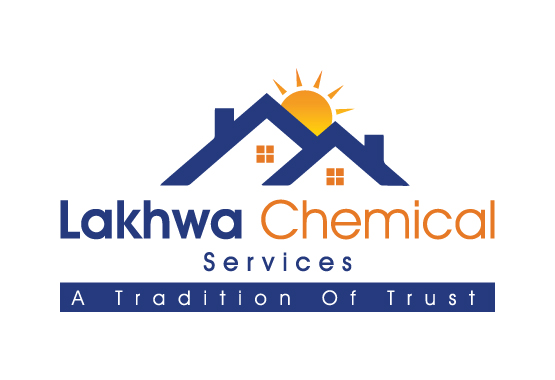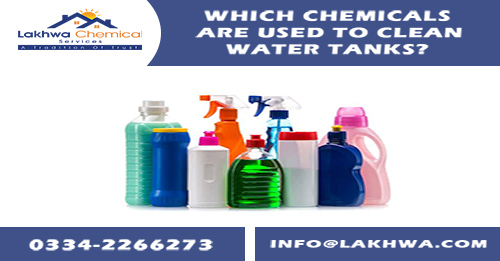Which Chemicals are used to Clean Water Tanks?
Every water tank storage needs periodic cleaning and maintenance to inhibit microbial growth and water-borne diseases. Over time, sediments accumulate in the clean tanks, causing unpleasant odors and health risks. Special chemicals are used to flush the cylindrical reservoirs. Moreover, PPEs (gloves, goggles, respiratory mask, etc.) are also worn for an organized work environment.
* N.B. It is advised to use non-toxic and food-safe cleaning agents for best results.
Chlorine-Based Disinfectants
Chlorine-based disinfectants, such as chlorine bleach or calcium hypochlorite, are commonly used for water tank cleaning and disinfection. Chlorine kills bacteria, viruses, and algae, making it an excellent choice for residential purposes. However, it should be used in appropriate concentrations. Comprehensive rinsing is necessary to remove any residual chlorine and prevent its negative impact on water taste and odor.
Vinegar
White vinegar is a mild acid that restricts mineral deposits and scaling in water tanks. The cleaning process is simple:
1 litre of vinegar for every 100 litres of water
Scrub the tank’s interior with a soft brush after mixing the solution (vinegar and water). Rinse it thoroughly for a long-lasting shine. Vinegar is a safe-to-use cleaning agent to help dissolve calcium, limescale, and other mineral deposits that accumulate over time. It is non-toxic and does not pose a risk to human health or the environment.
Read More
Environmental Conditions to Consider While Installing a Waterproofing Membrane
Is Bitumen Good For Waterproofing?
The Most Economical Method for Heat Proofing Roofs
Hydrogen Peroxide
One of the best alternatives to chlorine bleach, food-grade hydrogen peroxide is commonly used for cleaning water tanks. This chemical is effective against bacteria and viruses. Moreover, it doesn’t leave any foul smell. For cleaning purposes, follow the recommended dosage and safety guidelines provided with the product.
Citric Acid
Citric acid is a descaling agent that helps remove mineral deposits and particulates. It is used in different household washing products. With regards to water tank cleaning, dilute the acid with water and use accordingly. It is safe, biodegradable, and does not harm the environment. Like vinegar, proper rinsing is necessary after usage to ensure a chemical-free tank.
Phosphoric Acid
Phosphoric acid is used to clean and disinfect water tanks, CIP equipment, spray systems, and storage containers. It removes scale, mineral deposits, and rust from different surfaces. Moreover, it provides adequate protection against re-rusting. For handling, wear proper protective gear and exercise caution during work. After the process, rinse the container with water to ensure that no residue is left.
N.B. For first aid, use cool water for flushing the affected area. Visit the doctor if necessary.
Sodium Hydroxide
Sodium hydroxide, also known as caustic soda, is effective in removing grease, oils, and other organic matter. It can flush clogged pipes, attached to tanks, drains, and sinks, in quick time. Caustic soda is a corrosive substance that causes severe burns and injuries: Users should wear protective gloves, goggles, and mask for safety purposes.
Tips for Maintaining a Water Tank
While cleaning the storage tank is necessary, it’s not the only solution. There are several aspects you can follow to preserve the tank’s usability for long periods.
Inspect for Leaks & Damage
Check the tank for any signs of leaks, cracks, or damage. A damaged tank can lead to water loss and contamination. Repair any issues or seek professional assistance if required.
Maintain Proper Ventilation
Ensure that the water tank has adequate ventilation to prevent the growth of mold, mildew, or unpleasant odors. Proper airflow helps to maintain water quality and prevent the buildup of harmful bacteria.
Read More
Types of GI Corrugated Waterproofing
Types of Roof Heat Proofing in Karachi
How to Prevent Roof from the Sun’s Heat in Pakistan?
Avoid Sunlight
Protect your water tank from direct sunlight. Sunlight exposure can promote the growth of algae and bacteria. If your tank is exposed to sunlight, consider using a tank cover or painting it with a UV-resistant coating.
Other parameters include:
- Test Water Quality
- Follow Manufacturer Guidelines
- Consult Professionals
Remember to consult the manufacturer’s instructions and safety guidelines when using any chemicals for clean tanks. If you have any specific concerns, or if your water tank requires professional cleaning, it is advisable to seek guidance from Lakhwa Chemical Services, the best waterproofing company in Pakistan.




Leave a Reply
Want to join the discussion?Feel free to contribute!